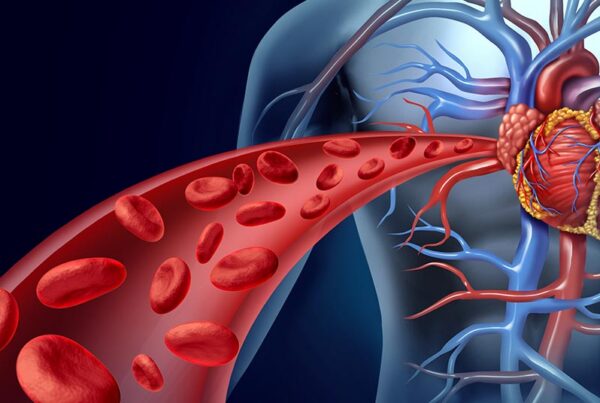Heart surgeries are among the most complex and dangerous medical interventions.
This is due to the heart’s vital function and the complex vascular system connected to it.
Despite technological and medical advancements, some of these surgeries remain a major challenge. Especially if the patient has risk factors or if there’s a lack of appropriate medical expertise.
When it comes to heart health, some surgical procedures gain a special reputation. This is due to their complexity and potential risks.
Before delving into the details of the operations themselves, it’s important to understand the criteria.
These define the danger of any heart surgery. Not all operations are equal in terms of risk level. Several factors play a key role in determining the degree of risk.

Heart Transplant
Heart transplantation tops the list. This is when we talk about the most dangerous heart surgeries ever.
This complex surgery not only requires exceptional surgical skill. It also depends on the availability of a healthy organ at the right time. Key challenges include:
- The body rejecting the transplanted heart, requiring lifelong immunosuppressants.
- Post-surgical infection due to weakened immunity from medications.
- Problems in the coronary arteries of the transplanted heart.
- Death while waiting on the transplant list.
Open Aortic Surgery
Open surgery on aortic vessels is among the most dangerous operations. This is especially true when treating aneurysms or repairing congenital defects. Risks include:
- Significant bleeding.
- Spinal cord injury, leading to partial or complete paralysis.
- Kidney or respiratory complications due to increased intrathoracic pressure and double lung ventilation.
Bentall Procedure
We resort to this procedure when there’s an aortic valve defect. This is accompanied by an aortic root aneurysm.
The surgery involves replacing the valve. It also involves resecting part of the aorta. It then uses artificial conduits. These are connected to the aortic artery.
Risk stages include:
- Arterial rupture.
- Artificial valve malfunction.
- Lateral rupture.
- Complications from using cardiopulmonary bypass.
Pulmonary Thromboendarterectomy (PTE)
This operation is performed to treat chronic pulmonary hypertension. This results from blood clots accumulating within the pulmonary arteries. It requires cardiopulmonary bypass. It also needs deep hypothermia.
This increases the risks of prolonged hospital stay. Additional clots and brain ischemia are also risks.
Mitral Valve Replacement or Repair
When there’s mitral valve insufficiency or leakage, repair or replacement is performed. Repair is less risky than replacement. But both involve risks of bleeding, infection, stroke, and reoperation.
Coronary Artery Bypass Graft (CABG)
Coronary artery bypass operations are the most common treatment. Success rates are high. However, risks remain. These include post-surgical bleeding, heart rhythm disorders, kidney failure, or stroke. These result from thrombosis or air embolisms.
Redo Cardiac Surgery
Surgery on a heart that has undergone previous surgery becomes riskier. This is due to scar formation and adhesions.
This makes accessing the surgical areas difficult. It increases the likelihood of bleeding and injury to adjacent organs.
Left Ventricular Assist Device (LVAD) Implantation
Implanting ventricular assist devices is sometimes a temporary or permanent alternative. This is for advanced heart failure cases.
This procedure carries risks of bleeding. It also risks infection targeting the implanted part. And clotting disorders that can lead to stroke or brain hemorrhage.
Use of Cardiopulmonary Bypass (CPB) Technology
This technology is used in most open-heart surgeries. It’s essential for life support during the operation.
However, it can cause hemolysis. It can also cause sudden hypotension. Clotting disorders, immune reactions, and even temporary cognitive impairment after surgery are also risks.
Pediatric Heart Surgery: Unique Challenges
Heart surgeries in infants and children carry special risks due to:
- Small organ size: This makes the surgical technique more complex.
- Complex congenital anomalies: These may include multiple defects.
- Sensitivity of a child’s tissues: Due to their low tolerance for invasive procedures.

Heart Operations at Liva Hospital in Turkey
Liva Hospital in Istanbul is one of the world’s advanced centers in cardiac surgery. It features a multidisciplinary team.
This includes cardiologists, surgeons, and intensive care specialists. It also has high-tech equipment for simulating operations before performing them. This reduces complication rates.
The hospital uses strict follow-up protocols. These include periodic imaging and scans for reassurance. Also, close monitoring is required during the return to daily life after surgery.
Conclusion
With immense medical progress, some heart operations remain in the “most dangerous” category. This is due to their complexity and the heart’s vital function. Examples include open aortic surgery, the Bentall procedure, and mitral valve replacement.
While heart surgeries are generally safe with high success rates, some procedures gain a “most dangerous” reputation.
This is due to their complexity and high complication rates. Continuous medical advancement in specialized centers like Liva Hospital in Turkey significantly contributes to reducing these risks.
The outcome of the operation remains linked to the readiness of the medical center and the competence of the team.
Especially centers like Liva Hospital, which offer a model of integrated medical partnerships that strive to reduce complications.
Frequently Asked Questions (FAQ)
How common is open aortic surgery?
It’s specifically used for treating or repairing aortic aneurysms. However, it’s less common than coronary bypass.
Is valve repair or replacement preferred?
Repair is less risky and more long-term. But it cannot be applied to all cases.
How fast is recovery after LVAD implantation?
It varies by case. But it usually begins after weeks with close follow-up to avoid infection.
Are reoperations always more severe?
Yes, the presence of scars and increased scarring makes the operation more complex and risky.
Can CPB use be avoided?
Some coronary operations performed without CPB (off-pump CABG) reduce some complications. But they are not suitable for everyone.
How does Liva Hospital contribute to reducing risks?
Through remote post-surgical protocols, high-quality monitoring devices, and rapid handling of any complications before patient discharge.



